Dear reader, you may be surprised to learn that Lewis Carroll was not, as previously suggested on this site, Jack the Ripper, but a diligent student of Judaism, whose Alice books, far from being confessions to a series of grisly murders, are in fact coded tracts relating to Jewish history, rites and culture.
It may seem odd that Carroll, real name Charles Lutwidge Dodgson, an Anglican deacon, would have a mania for Judaism that has gone completely unremarked by any of his biographers. (On the contrary, some have actually accused him of antisemitism, though the evidence for this seems flimsy and uncertain. He was not antisemitic in the manner of someone like Richard Wagner, that much seems clear.)
Nevertheless, regardless of the details of Carroll's life, we must take Abraham Ettleson's argument on its own merits. If he makes a compelling case then we must be prepared to revise our views. So let's start at the beginning, in Looking-glass House, where we find the following paragraph:
“Do you know, I was so angry, Kitty,” Alice went on as soon as they were comfortably settled again, “when I saw all the mischief you had been doing, I was very nearly opening the window, and putting you out into the snow! And you’d have deserved it, you little mischievous darling! What have you got to say for yourself? Now don’t interrupt me!” she went on, holding up one finger. “I’m going to tell you all your faults. Number one: you squeaked twice while Dinah was washing your face this morning. Now you can’t deny it, Kitty: I heard you! What’s that you say?” (pretending that the kitten was speaking.) “Her paw went into your eye? Well, that’s your fault, for keeping your eyes open—if you’d shut them tight up, it wouldn’t have happened. Now don’t make any more excuses, but listen! Number two: you pulled Snowdrop away by the tail just as I had put down the saucer of milk before her! What, you were thirsty, were you? How do you know she wasn’t thirsty too? Now for number three: you unwound every bit of the worsted while I wasn’t looking!
Only the most alert reader might detect the secret meaning of this passage pointed out by Ettleson:
Every youngster who can talk knows the meaning of Number One and Number Two, and putting these together means making the morning ablutions.
Ablutions are part of the daily morning ritual, as is "putting on the tsitses", which Ettleson avers is referred to by "worsted" in the passage above, tsitses, or "tzitzit" being the tassles worn by observant Jews.
As if that were not enough, he also finds a reference to Yom Kippur in the words "shut .. up", which means:
you should have kept your mouth shut, that is, not eat or drink on Yom Kippur.
That Carroll's words specifically refer to shut eyes rather than the mouth doesn't seem to matter to Ettleson. A writer can say one thing while meaning another, after all.
Anyone who proposes to explain Through the Looking-Glass must tackle the great poem "Jabberwocky" and Ettleson has his own very special take to offer.
“Jabberwocky” Is the code name of Rabbi Israel. Split the word Jabberwocky In almost equal parts, i..e. between the letters r and w.
Reading Jabber from right to left spells Rabbi, and reading Wocky from right to left we derive the word Ykcow which sounds like the name Yacow, Yacow is the Hebrew name of Jacob, and Jacob is Israel. So Jabberwocky means Rabbi Israel. His full name was Rabbi Israel Ben Eliezer, the famous Baal Shem Tov of Medzhbish.
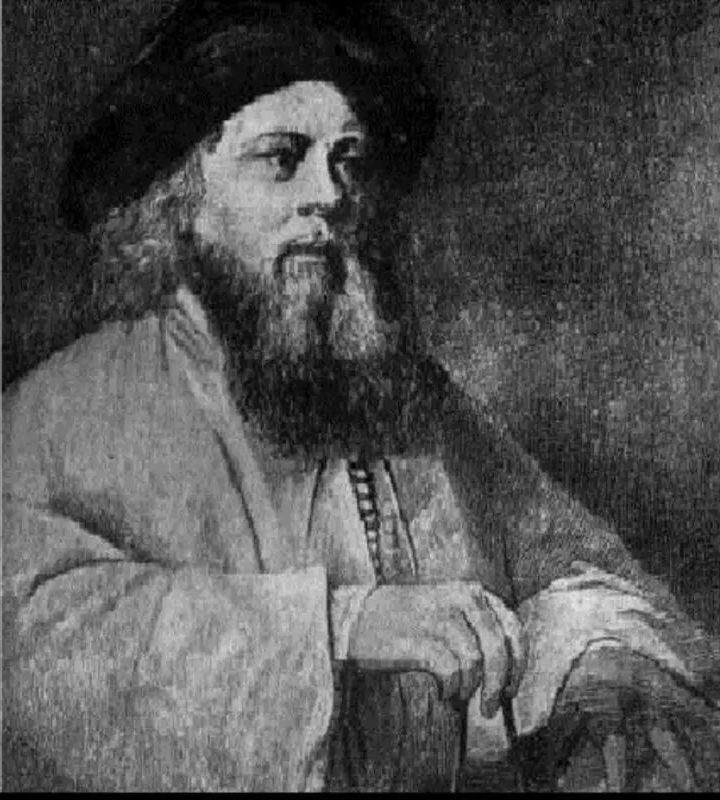
|
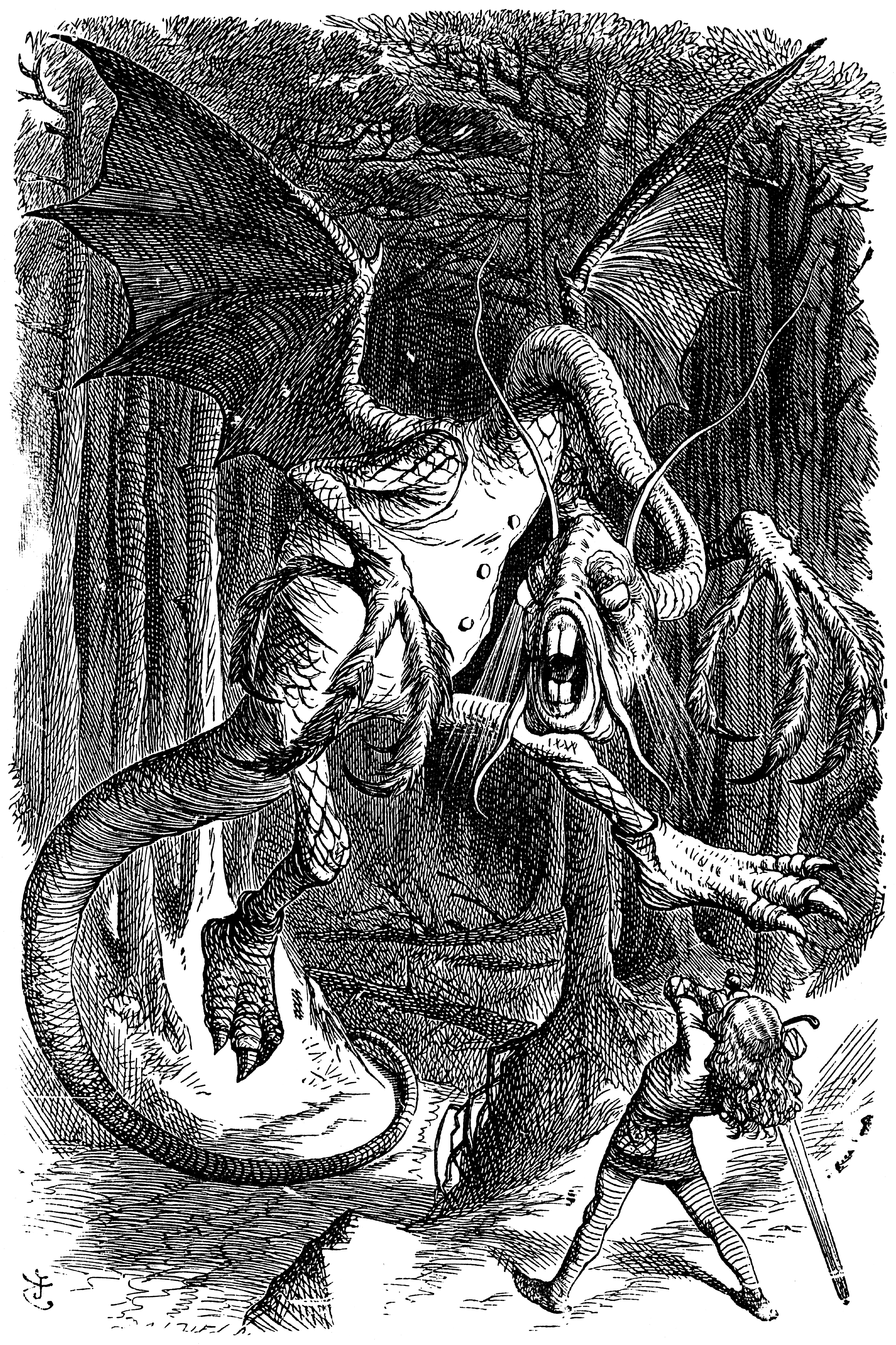
|
Rabbi Israel, also known as the Baal Shem, is said to have once fought and bested Satan himself, who menaced him in the form of a wolf. In another story, he performed a miracle to ensure that a childless couple would bear a son, uttering "the Sacred Name" in an act of blasphemous conjuration. God, rather than simply saying "nah" to the Rabbi's invocation, instead let the couple have their magic baby while punishing the Rabbi for his presumption. Legends like these and other facts about Rabbi Israel are the hidden message of "Jabberwocky". Here, for example, is the explanation of Carroll's word "tulgey", as in the "tulgey wood" where much of the poem's action takes place:
...there is no such word as tulgey in the dictionary. When tulgey is spelled backwards, beginning at the letter g and then adding on the letters e and i (y), we get the word g-l-u-t-e-i.
This word is a medical term which means the gluteal musculature of the buttocks, which is generally one of the first parts of the gross anatomy taken up in the very first semester of the first year in medical school. So the word glutei symbolizes a doctor of medicine. In the case of the Baal Shem he practiced his own brand of medicine, as though he were a physician, and by associating the words tulgey and wood together, we obtain the appellation, “Backwoods Doctor”, which would fit him appropriately,
(Incidentally, Dodgson himself maintained a life long interest in medicine so he must have picked up a good deal of medical information in the process.)
"Backwoods Doctor"? Don't you mean "Backside Doctor"? (His mental leap directly from buttocks to doctors suggests Ettleson was a student of the Carry On films).
The central event of "Jabberwocky", the death of the Jabberwock at the hands of the protagonist with his "vorpal blade" going "snicker-snack", is reversed in Ettleson's interpretation, with the Jabberwock Rabbi Israel being the killer rather than the killed. He is the "shochet": the person who kills the chicken for Friday night dinner. Such a relief to find that what appears to be a battle to the death with a horrifying mythical beast is actually an elderly gent chasing a fowl.
Such reversals are crucial to a proper understanding of Through the Looking-Glass — a book about a reflected world after all — and as Ettleson points out, the Hebrew language, being written right-to-left, is reversed in its orientation compared to English and therefore an appropriate choice to encode the hidden meaning which lurks behind the text. Ettleson omits to explain why Dodgson should have troubled to conceal references to Judaism in an amusing book of nonsense aimed primarily at children, especially as his decoded version is so anodyne, consisting as it does of a series of thumbnail sketches of Jewish history and life. If it contained some urgent message, such as "the Messiah is coming soon and this is what he will be like" or "here at last - King Solomon's original recipe for Matzoh Balls!", then one could understand the motive behind it, but instead we get passages in which the original text is treated like a picture which you must stare at with crossed eyes until you see something deeply disappointing hidden in the shadows. Take this passage from Looking-Glass, for example:
All this time Tweedledee was trying his best to fold up the umbrella, with himself in it: which was such an extraordinary thing to do, that it quite took off Alice’s attention from the angry brother. But he couldn’t quite succeed, and it ended in his rolling over, bundled up in the umbrella, with only his head out: and there he lay, opening and shutting his mouth and his large eyes—“looking more like a fish than anything else,” Alice thought.
Ettleson elucidates the same passage as follows:
Haman was an astrologer, and when he was about to fix the time for the massacre of the Jews he first cast lots (Pur) to ascertain which was the most auspicious day of the week for that purpose. Each day, however, proved to be under some influence favorable to the Jews. He then sought to fix the month, but found that the same was true of each month. But when he arrived at the month of Adar, he found that its Zodiacal sign was Pisces, he said, “Now I shall be able to swallow them as fish which swallow one another.” (Esth R. VII, Targ. Sheni III.) (Jewish Encyclopedia, Vol 6, Page 189 ~—Haman The Agavite.)
It is said that explaining a joke takes away the comedy, but this is something else. The stubborn perversity of Ettleson's readings adds a new level of humour through its sheer boneheaded audacity. One might compare it to Tom Phillips' wonderful A Humument except that it (appropriately) inverts Philips' practice of transforming an ordinary Victorian novel into a stunning new work of art: instead Ettleson takes something glorious and does his best to make it dreary and dull.
Ettleson's book was published by the apparently respectable Philosophical Library imprint, whose list as printed on the rear jacket consists of reputable works on philosophy and related subjects, although it seems a somewhat haphazard selection of titles, perhaps guided more by how cheaply the rights could be got than on their individual merits. At any rate, why they picked up this oddity is unclear, though it does have that po-faced air of learning that can be mistaken for depth, rather like those other crank books that achieved mainstream publication, The Hands of Children and The Clairvoyant Theory of Perception. It also has a brief foreword by Rabbi Adam Neuberger, who praises Ettleson's scholarship and labels him "a direct descendant of the Baal Shem Tov", which probably also helped his cause.
Apart from writing this book Ettleson led a respectable career as a brain surgeon, with one notable highlight occurring during the Spanish civil war in 1937, as shown in the newspaper clippings above. He died in 1971, the same year that his companion book on Alice in Wonderland finally appeared.
In conclusion, Ettleson's book is, like the notions of Carroll's White Knight, "his own invention" and of just as much use. He found a new way of falling off a horse and gifted it to a world that remains ungrateful.
(Thanks to Donna Kossy for bringing this book to my attention).
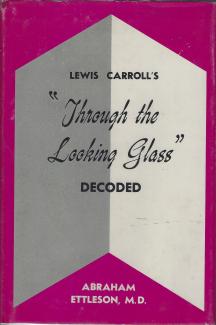
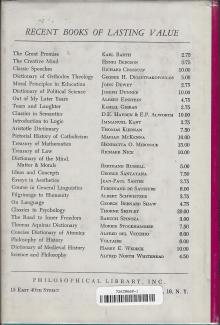
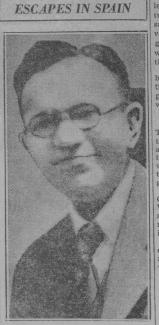
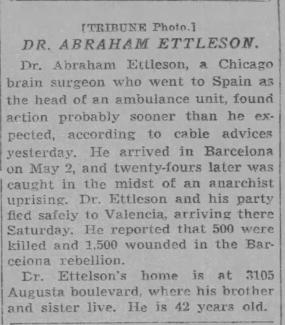

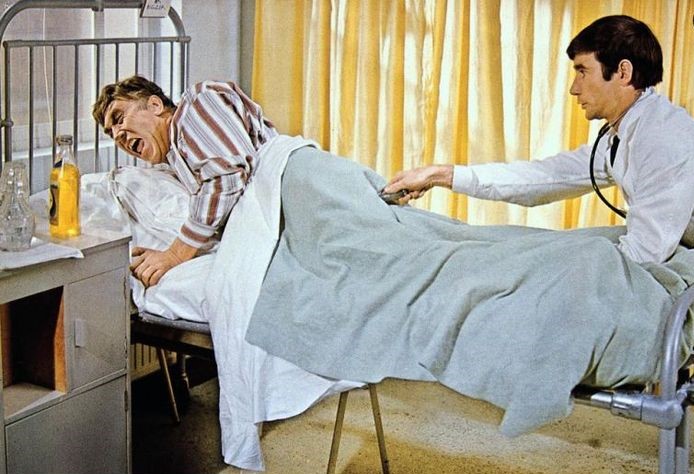

I strikes me that Dr…
I strikes me that Dr. Ettleson must have had a lot of free time, much more than I would have expected. I wonder what point he was trying to make with his convoluted and bizarre “code breaking”? So much effort with so little purpose.